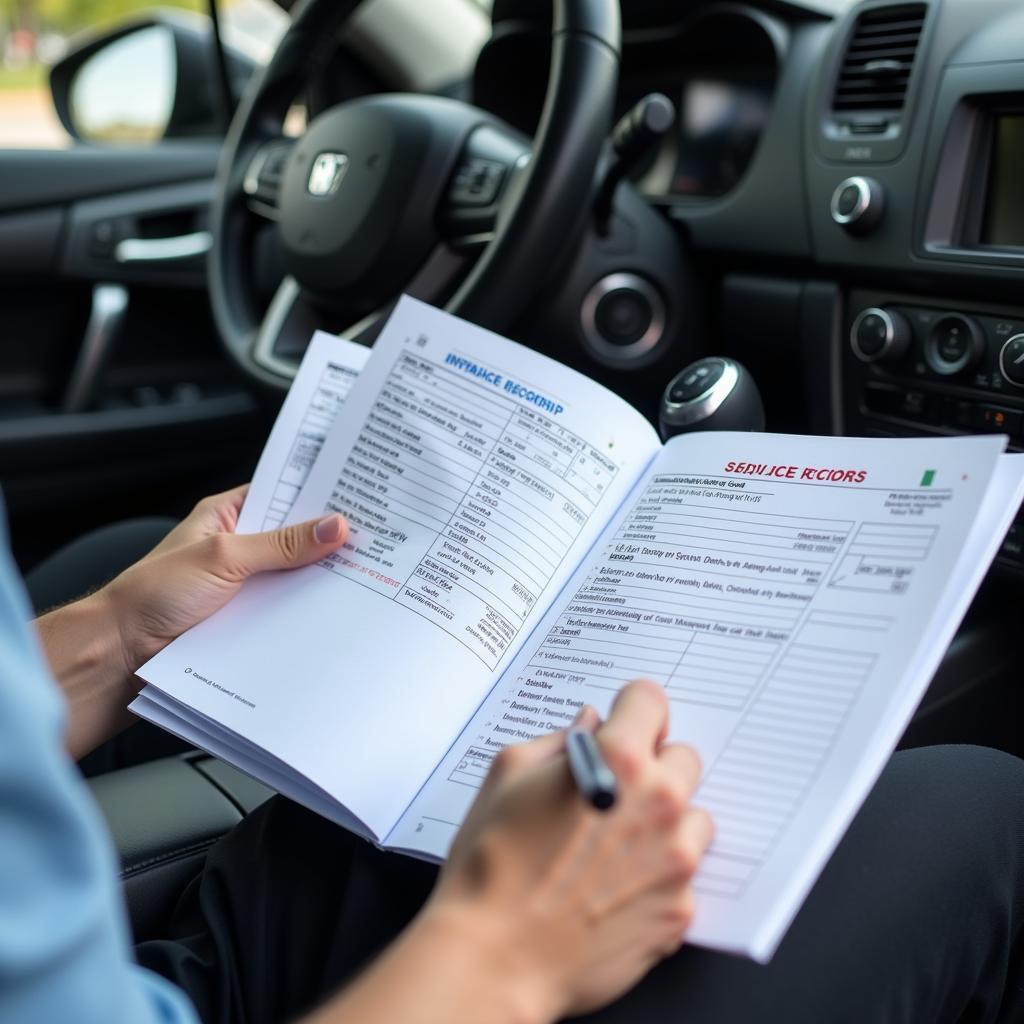Finding a truly maintenance-free used car is like searching for the mythical unicorn – it simply doesn’t exist. While some used cars may require less frequent maintenance than others, every vehicle needs some level of care to remain reliable and safe. Understanding this reality is crucial for any prospective buyer. This article will delve into the complexities of used car maintenance, helping you navigate the market and make informed decisions, so you can avoid costly repairs down the road.
Similar to maintenance of a car costs, the key to finding a reliable used car lies in understanding what to look for and being prepared to invest in necessary maintenance. Don’t be fooled by the allure of “maintenance-free” promises. Instead, focus on identifying well-maintained vehicles with a clear history and realistic maintenance expectations.
What Does “Maintenance Free” Really Mean?
The term “Maintenance Free Used Cars” is often used loosely, implying minimal maintenance requirements. In reality, it typically refers to vehicles that have recently undergone routine servicing, like an oil change or tire rotation. However, this doesn’t guarantee future freedom from maintenance. Every car, regardless of age or mileage, will eventually require parts replacements, fluid top-ups, and other essential maintenance procedures.
What factors influence how much maintenance a used car needs? The make and model, mileage, driving conditions, and previous maintenance history all play significant roles. A well-maintained vehicle with a comprehensive service record is more likely to be reliable than a neglected one, even if it boasts a “maintenance-free” label.
 Used Car Inspection Checklist for Maintenance
Used Car Inspection Checklist for Maintenance
How to Choose a Low-Maintenance Used Car
Choosing a low-maintenance used car involves careful research and inspection. Start by researching reliable car brands and models known for their durability and longevity. Consider factors like fuel efficiency, common problems, and the availability of affordable parts.
Next, thoroughly inspect the car’s history. Obtain a vehicle history report to check for accidents, title issues, and previous maintenance records. A detailed service history can provide valuable insights into the car’s overall condition and potential future maintenance needs.
When inspecting the car in person, pay close attention to critical components like the engine, transmission, brakes, and suspension. Look for signs of wear and tear, leaks, or any unusual noises. Don’t hesitate to have a qualified mechanic conduct a pre-purchase inspection to identify any hidden problems.
 Reviewing Car Maintenance Records
Reviewing Car Maintenance Records
Essential Maintenance for Any Used Car
Even the most reliable used cars require regular maintenance. Essential maintenance tasks include regular oil changes, filter replacements (air, fuel, cabin), brake inspections, tire rotations, and fluid top-ups (coolant, brake fluid, power steering fluid). Adhering to the manufacturer’s recommended maintenance schedule is crucial for preserving the car’s performance and longevity.
Don’t underestimate the importance of seemingly minor tasks like checking tire pressure and fluid levels. These simple checks can prevent major problems and costly repairs down the line. Remember, proactive maintenance is always more cost-effective than reactive repairs.
“Regular maintenance is like brushing your teeth,” says John Smith, Lead Automotive Technician at Smith Automotive. “It might seem tedious, but it prevents much bigger problems down the road.”
Budgeting for Maintenance on a Used Car
Budgeting for maintenance is crucial when owning any car, especially a used one. Set aside a monthly amount specifically for car maintenance and repairs. This will help you avoid financial surprises when unexpected repairs arise.
The cost of maintaining a used car varies depending on the make, model, age, and mileage. Research typical maintenance costs for the specific car you’re considering. This will give you a better understanding of potential future expenses.
“Having a dedicated maintenance fund can save you from a lot of headaches,” advises Sarah Jones, Certified Financial Planner at Jones Financial. “It allows you to address issues promptly without straining your budget.”
As with car maintenance transmission fluid, regular checks and changes can prevent costly transmission repairs.
Conclusion
While a truly “maintenance free used car” is a myth, choosing a well-maintained vehicle and adhering to a regular maintenance schedule can minimize the need for major repairs. By focusing on proactive maintenance and informed decision-making, you can enjoy the benefits of used car ownership without the burden of constant repairs. Contact AutoTipPro at +1 (641) 206-8880 or visit our office at 500 N St Mary’s St, San Antonio, TX 78205, United States for expert advice and assistance with your used car maintenance needs. We’re here to help you keep your car running smoothly.
Just like keeping track of maintenance history connected car, proper budgeting helps ensure your vehicle stays in top condition. Using the best app recording car maintenance can also be a great help. Similarly, maintaining your new Toyota, like toyota new car maintenance free, requires proactive effort, despite the initial “new car” phase.






Leave a Reply